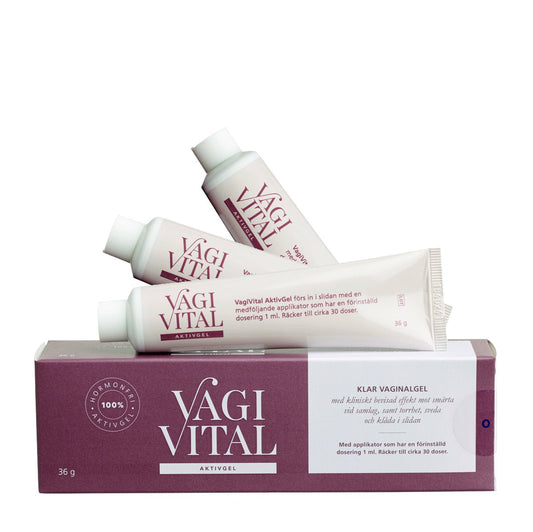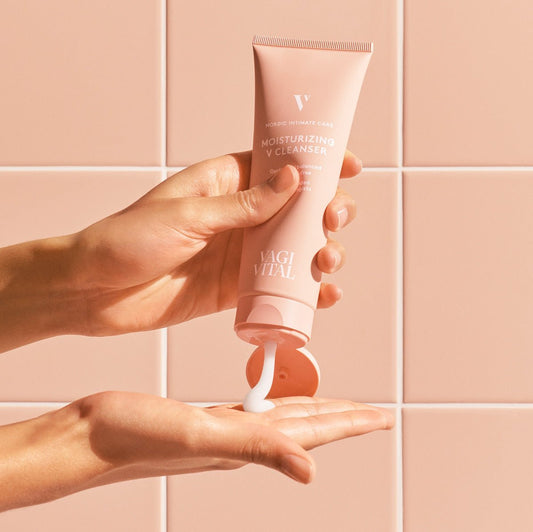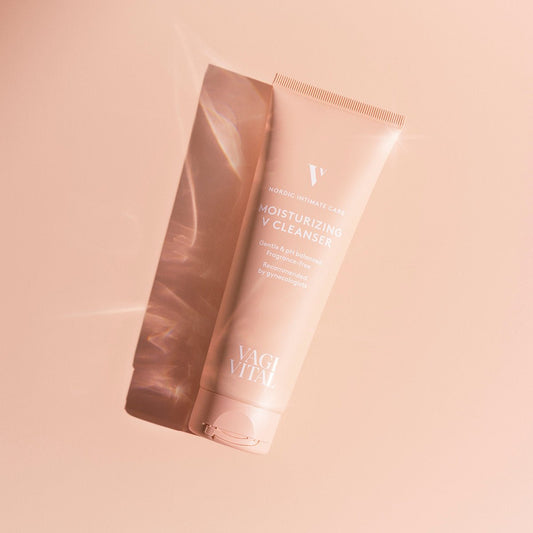How women’s and men’s intimate health affect each other
Intimate health is not just about your own body – it’s also about your partner’s. Women’s genital health is often discussed separately from men’s, but research shows that men’s intimate health and microbiome directly influence women’s – through biological, microbial, and psychological mechanisms. And the interaction goes both ways: women’s intimate health and microbiome also affect men’s genital health.
Women and men – two microbiomes that meet
It is well-known that a woman’s vaginal flora and microbiome are sensitive and easily influenced by changes. Composed of billions of microorganisms, a balanced microbiome is essential for intimate well-being (read more in our article on research around the vaginal microbiome).
Less well-known is that men also have a genital microbiome – a collection of bacteria and microorganisms naturally present on the skin and mucous membranes, particularly on the penis, foreskin, and around the urethral opening. The male microbiome varies between individuals, depending on factors such as hygiene, sexual activity, circumcision, and product use.
Research shows that bacteria from a man’s intimate area can affect a woman’s microbiome and can be transferred during sexual contact. If a man has an imbalance in his microbiome – for example due to poor hygiene, antibiotic use, or inflammation – it can disrupt a woman’s vaginal environment, causing irritation and increasing the risk of infections such as bacterial vaginosis, yeast infection, or urinary tract infection.
The interaction goes both ways: a woman’s microbiome can also influence a man’s. Common genital infections, such as bacterial vaginosis or yeast infections, can alter a man’s microflora and lead to irritation, inflammation, or increased sensitivity in the penis and urethra.
Studies also show that couples often develop similar microbial profiles over time, illustrating how closely intertwined women’s and men’s microbiomes are.
Intimate pH – small differences, big impact
A woman’s vaginal pH typically ranges from 3.8 to 4.5, creating an acidic environment that protects against harmful bacteria. Men’s skin in the intimate area has a higher pH, around 5.5–6.5. During close intimate contact, men and women’s pH can affect each other, and even small differences can have noticeable effects.
A man who uses strong soaps, shower gels, or aftershave – or fails to adequately moisturize the skin – can temporarily disturb a woman’s vaginal environment and its natural balance, causing irritation or discomfort. Similarly, a woman’s more acidic vaginal environment can affect a man’s skin and microbiome, sometimes causing redness, irritation, or discomfort.
For this reason, pH-balanced, mild products are recommended for both sexes – something dermatologists and gynecologists often emphasize as a preventive measure.
A shared perspective on intimate health
Intimate health is therefore something partially shared. When women and men take responsibility together, they can contribute to better intimate health and reduce the risk of imbalances and infections – conditions that often affect both partners, even if symptoms are more noticeable in women. By talking openly and understanding how bodies interact, even small changes can make a big difference.
Love YourSelf 🤍 Love Your V
Recommended products for you
- Choosing a selection results in a full page refresh.
- Opens in a new window.













